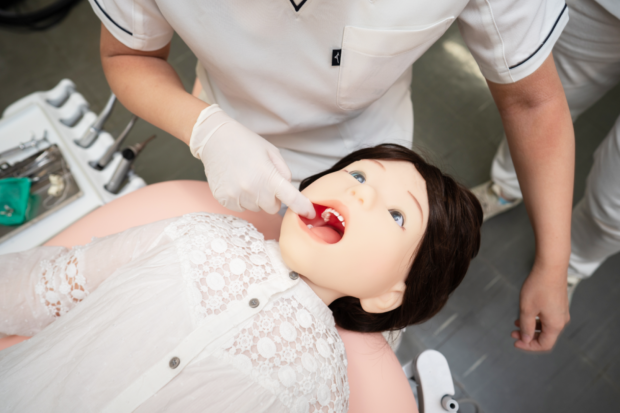There are things that are exclusively something that you'd say "only in Japan" which is reflected in my headline, where today I saw Reuters sharing a video of "Pedia_Roid": a lifelike child-looking robot that dentists are using in training.
The robot is made in the style of a 6-year-old girl, who is nervous about her dental treatment -- don't worry fantasy real-world, but robotic young girl, I'd be nervous as well -- which "realistically mimics the typical reaction & behavior of child patient who is nervous of receiving dental treatment".
Nissin Dental Products Inc. made the robot, specifically designer for dental, medical, and healthcare students to hone their skills on treating young patients. These learning skills involve communication with the child, facial expression monitoring, avoiding medical accidents, as well as basic life support in an emergency. The company explains that these training situations are "difficult to perform on live child patients". Well, yeah... uh.
Nissan Dental Products Inc. explains on their official YouTube video of Pedia_Roid: "Pediatric Patient Robot simulates the typical reaction & behavior of child patient who is nervous of receiving dental treatment. She is designed for dental/medical/healthcare students to develop the necessary skills for treating child patients such as communication, medical accident avoidance and basic life support in emergency situation. Such trainings are very difficult to preform with live child patients".
Maybe I've watched far too many TV shows and movies, but I can see this technology leading us down a dark path as a human race. Sure, in training situations this is great... I guess... but what happens when we reach a point when a "realistic" heart and "realistic" eyes are installed?
Wouldn't the point of this company be to make better and better, more realistic robots... child-styled robots... which even in this form, have the ability of even being able to take blood through intravenous injection. The eyes dialate, etc... I mean it is only maybe 5-10 years, maybe 10-20 at most, before we'd have replica human children being made.
Just think about that for a second.

Features:
Various facial expressions and body movements such as:
- Facial complexion & pupil dilation to express anxiety, fear and resistance.
- Unexpected movements of the head, tongue, arms & legs to mimic a child's refusal to being treated.
Replicates accidental systemic symptoms such as:
- Convulsions stemming from acute attack and anaphylaxis shock due to local anesthesia positioning.
Allows students to practice and acquire basic life support skill such as:
- Vital check, intravenous injection, and cardiac massage, etc.


